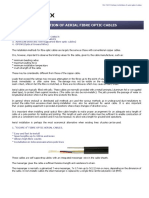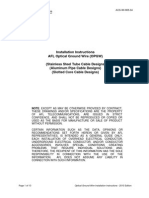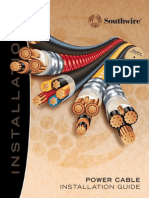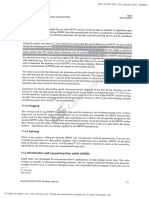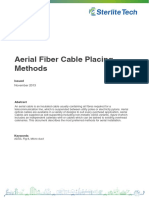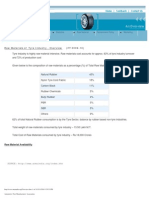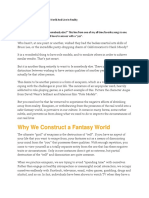Installation Instructions AFL Optical Ground Wire (OPGW) (Stainless Steel Tube Cable Designs) (Aluminum Pipe Cable Designs) (Slotted Core Cable Designs)
Installation Instructions AFL Optical Ground Wire (OPGW) (Stainless Steel Tube Cable Designs) (Aluminum Pipe Cable Designs) (Slotted Core Cable Designs)
Uploaded by
HASSAN MRADCopyright:
Available Formats
Installation Instructions AFL Optical Ground Wire (OPGW) (Stainless Steel Tube Cable Designs) (Aluminum Pipe Cable Designs) (Slotted Core Cable Designs)
Installation Instructions AFL Optical Ground Wire (OPGW) (Stainless Steel Tube Cable Designs) (Aluminum Pipe Cable Designs) (Slotted Core Cable Designs)
Uploaded by
HASSAN MRADOriginal Description:
Original Title
Copyright
Available Formats
Share this document
Did you find this document useful?
Is this content inappropriate?
Copyright:
Available Formats
Installation Instructions AFL Optical Ground Wire (OPGW) (Stainless Steel Tube Cable Designs) (Aluminum Pipe Cable Designs) (Slotted Core Cable Designs)
Installation Instructions AFL Optical Ground Wire (OPGW) (Stainless Steel Tube Cable Designs) (Aluminum Pipe Cable Designs) (Slotted Core Cable Designs)
Uploaded by
HASSAN MRADCopyright:
Available Formats
ACS-WI-805.
06
Installation Instructions
AFL Optical Ground Wire (OPGW)
(Stainless Steel Tube Cable Designs)
(Aluminum Pipe Cable Designs)
(Slotted Core Cable Designs)
NOTE: EXCEPT AS MAY BE OTHERWISE PROVIDED BY CONTRACT,
THESE DRAWINGS AND/OR SPECIFICATIONS ARE THE PROPERTY
OF AFL TELECOMMUNICATIONS LLC, ARE ISSUED IN STRICT
CONFIDENCE, AND SHALL NOT BE REPRODUCED OR COPIED OR
USED AS THE BASIS FOR MANUFACTURE OR SALE OF PRODUCT
WITHOUT PERMISSION.
CERTAIN INFORMATION SUCH AS THE DATA, OPINIONS OR
RECOMMENDATIONS SET FORTH HEREIN OR GIVEN BY AFL
REPRESENTATIVES, IS INTENDED AS A GENERAL GUIDE ONLY.
EACH INSTALLATION OF OVERHEAD ELECTRICAL CONDUCTOR,
UNDERGROUND ELECTRICAL CONDUCTOR, AND/OR CONDUCTOR
ACCESSORIES INVOLVES SPECIAL CONDITIONS CREATING
PROBLEMS THAT REQUIRE INDIVIDUAL SOLUTIONS AND,
THEREFORE, THE RECIPIENT OF THIS INFORMATION HAS THE SOLE
RESPONSIBILITY IN CONNECTION WITH THE USE OF THE
INFORMATION. AFL DOES NOT ASSUME ANY LIABILITY IN
CONNECTION WITH SUCH INFORMATION.
Page 1 of 16 Optical Ground Wire Installation Instructions - 2012 Edition
ACS-WI-805.06
AFL OPTICAL GROUND WIRE
INSTALLATION INSTRUCTIONS
Contents Section
General Information 1.0
Precautions 2.0
Cable Installation 3.0
Stringing Procedures 4.0
Sagging Methods 5.0
Deadending and Clipping In 6.0
Splice Points 7.0 – 8.0
Reference A
Anti-Rotational Device Drawing
1.0 GENERAL INFORMATION
Composite Optical Groundwire (OPGW) was developed to provide a large capacity
telecommunications system utilizing overhead power transmission lines. Serving the
additional purpose of an overhead ground wire, the OPGW is constructed of aluminum
clad steel strands and aluminum alloy strands stranded with stainless steel tubes or
surrounding a fiber unit (core) which contains optical fibers. OPGW can be installed using
the basic stringing methods currently employed for overhead ground wires, with minor
variations.
This document outlines basic installation methods applicable for existing and newly
constructed transmission lines. The installer should be thoroughly familiar with the
installation of conventional overhead ground wire and conductors. Additional information
can be obtained from the latest revision of IEEE Guide to Installation of Overhead
Transmission Line Conductors, IEEE Std 524.
2.0 PRECAUTIONS
Care must be taken to avoid damaging the OPGW during handling and stringing
operations. Avoid sharp bends to the cable and take precautions to prevent crushing the
OPGW during placement. The transmission quality of the optical fibers can potentially be
degraded if the OPGW is subjected to excessive pulling tensions or excessively small
bend diameters.
Always observe the recommended values for Maximum Stringing Tensions and Minimum
Bend Radius. More information about these values is contained on the following pages.
OPGW is normally supplied on non-returnable wooden reels. The cable is packaged with
a flex wrap or wooden lagging to provide additional protection during transportation. If the
cable is not to be installed for a period of over four months from the delivery date, it is
recommended that the cable be requested and shipped on steel reels rather than wood
reels. Please contact AFL for more details or to request shipment on steel reels.
OPGW cable reels should always be transported and handled in an upright position.
Never lay a reel of cable on its side. It is recommended that each reel of OPGW be tested
Page 2 of 16 Optical Ground Wire Installation Instructions - 2012 Edition
ACS-WI-805.06
prior to and after installation to ensure that fiber damage has not occurred during shipping
and/or stringing operations. All cable protective packaging (wood lagging or flex wrap) must
remain in place on all reels until placed on a pay-out rack and the rack is in position for cable
stringing.
Above all, be familiar with and observe all of your company’s safety rules when working
with overhead transmission lines. These installation recommendations should not
supersede any established safety practices.
3.0 CABLE INSTALLATION
Reel Preparation Prior to Beginning a Pull
AFL ships the cable reels with the inner tail securely connected to the outside of the reel
flange. This connection should be loosened, but not removed, prior to stringing. This
allows the inner layers of cable to adjust themselves to the varying tensions seen during
installation. As the cable makes these adjustments, the inner tail may lengthen, or “grow,”
requiring periodic attention to ensure that the cable continues to be in a state where it can
“grow” out.
The wooden reel will have through bolts connecting the two flanges. During shipment,
these bolts can loosen. Prior to stringing, the bolts should be tightened to help prevent
any issues while paying off the cable.
AFL recommends using the controlled tension stringing method of installation. Ordinary
stringing equipment can be utilized as if installing standard overhead ground wire
provided all of the minimum block sizes and other requirements of these instructions are
followed. Suitable equipment includes pullers, tensioners, reel winders, and stringing
blocks.
Figure 1 illustrates a typical stringing setup.
Stringing
Block
Pulling
100’ Line
OPT-GW
100’
Anti-Rotational Device Pulling
Tensioner Machine
300’ Distance to Stringing Equipment 300’
from Tower is Three Times
Block Height
FIGURE 1 - Typical Stringing Setup
There is one primary difference between installing OPGW and conventional overhead
Page 3 of 16 Optical Ground Wire Installation Instructions - 2012 Edition
ACS-WI-805.06
ground wires. Standard ground wires are typically spliced using compression type
connectors and locations of the splices are relatively flexible. The splice locations of the
OPT-GW cable must be planned to allow for splicing of the optical fibers. The reel lengths
will be engineered to locate the cable splices at predetermined towers on each end of a
stringing section.
After installing deadends, the free ends of the OPGW are trained down the towers to the
ground for splicing. The length of the free cable should be at least the tower height, plus
an additional 75 feet (23 meters) to accommodate the splicing. After stringing, this cable
length is typically coiled and temporarily stored at the tower until the splicing occurs.
The OPGW will also use special attachment hardware, including deadends, suspension
clamps, and wire fittings such as grounding clamps. The hardware is designed to provide
the necessary holding strengths and prevent deformation of the fiber unit which could
potentially damage the optical fibers.
Temperature Ranges:
Storage: -50°C to +85°C; Installation: -40°C to +85°C; Operation: -40°C to +85°C.
4.0 STRINGING PROCEDURES
Stranded wire pulling lines are generally used, although nylon ropes have also been
employed. In either case, the line must be rated strong enough to withstand the required
stringing tensions. The pulling line should have the same direction lay as the OPGW to
help resist the tendency to rotate under stringing load.
If an existing overhead ground wire is to be removed, it can potentially be used as a
pulling line for the OPGW. A visual inspection should be made of the existing ground wire
to be sure it is in suitable condition. If there is any concern about the existing wire’s ability
to withstand the stringing tensions, it should be pulled out and replaced with a pulling line.
It is recommended to use a bull-wheel type tensioner with round (not “V” type)
polyurethane lined contact grooves. The tensioner should have two bull-wheels, each
with multiple grooves to minimize cable damage. The tensioner should be capable of
maintaining the required tensions at various pulling speeds. Positive braking systems are
necessary for pullers and tensioners to maintain the tension when pulling is stopped.
Minimum diameter of the bull wheels should not be less that 70 x D (diameter of the
OPGW). For cable diameters greater than 0.787” (20 mm) please contact AFL.
The OPGW must be reeved (threaded) through the bull-wheel tensioner properly. Left
hand lay OPGW (typical USA) is reeved from right to left, as shown in Figure 2, below.
Right hand lay OPGW (typical International), is reeved from left to right. A thorough
explanation of the reeving process can be found in the latest revision of IEEE Std 524.
This arrangement is necessary to avoid any tendency to loosen the outer layer of strands and
to avoid induced torque during installation.
Page 4 of 16 Optical Ground Wire Installation Instructions - 2012 Edition
ACS-WI-805.06
To
Structure
From Reel
Figure 2. Reeving direction for Left Hand Lay OPGW cable, typical in North America.
The reel shall be placed directly in line with the tensioner. The distance from the reel to
the tensioner should be at least 25 feet (7.5 meters). The OPGW shall not be permitted to
scrape the reel flanges while being pulled.
The OPGW cable reels are not designed to withstand the braking forces present during
stringing. Direct tensioning of the OPGW from the cable reel is not recommended. Back
tension on the reel should only be enough to keep the cable properly seated in the
tensioner grooves and to prevent overshooting and bird-caging.
Two basic types of pulling machines are recommended for tension stringing. These are
either drum type or bull wheel type pullers. Positive braking systems are required in either
case. On a drum type puller, the pulling line is taken up directly onto the drum. On the
bull wheel type, the line is threaded onto two bull wheels, much like the tensioner, and
onto a self winding drum.
Stringing blocks, sometimes called travelers or sheaves, are mounted on the structure at
the OPGW attaching point in the normal manner. Please refer to Reference A, OPGW
Diameters and Bending Radius, for information on blocks diameters.
The stringing blocks should have neoprene lined grooves. The linings should be in good
condition and adhering to the block. Minor rough areas can be sanded out to ensure the
lining is smooth.
“Radius Blocks”, “Banana Blocks” or “Array Travelers” as shown below in Figures 3A-C
are strictly prohibited during the installation of OPGW. The decreased surface area in
contact with the OPGW is sufficient to damage the OPGW at typical stringing tensions.
Page 5 of 16 Optical Ground Wire Installation Instructions - 2012 Edition
ACS-WI-805.06
A B C
Figures 3A-C. These types of array installation blocks should NOT be used to string OPGW.
Uplift rollers (which attach to the installation sheave wheel) or hold-down blocks (which are
separate blocks) need to be placed where uplift of the pulling line is likely to occur (due to its
higher tension/weight ratio than the conductor). This will typically occur going up inclines or
at a low point in a section. These devices should also have a break away feature in the event
of fouling or incorrect installation. The size of the uplift rollers should follow the same
guidelines as the installation sheaves shown in Reference A.
The tensioner and puller should be positioned for a 3:1 ratio to the stringing block on the
first structure adjacent to the equipment. See Figure 1. The tensioner should be placed
in line with the first two structures (or first span) of the pull. Likewise, the puller should be
placed in line with the last two structures (or last span) of the pull. Doing so minimizes the
line angle change seen by the cable during the installation process.
This minimum stringing block diameter and distance to the tensioner (3:1) are
recommended to help prevent deformation of the fiber unit (aluminum pipe, stainless steel
tube or slotted core), which protect the optical fibers in the OPGW.
The use of an Anti-Rotational Device (see sample drawing on Page 16) depends largely
upon the construction of the optical ground wire. Such a device is used to prevent the
OPGW from twisting while being pulled. Variations of these devices have been successfully
used. Please consult the AFL for any inquiries regarding a particular form of anti-rotation
device.
For cables with helically stranded stainless steel tubes, an anti-rotational device may or
may not be required. To confirm whether one is needed for your particular application,
contact AFL. When in doubt, the conservative approach is to conduct the installation with
the use of an anti-rotational device. For cables constructed with an un-stranded stainless
steel tube in the center of the cable or single layer cables, an anti-rotational device is
always a requirement.
If the anti-rotational device is not preventing the cable rotation or if the anti-rotational
device is wrapping around the OPGW, a stiffer or heavier device is required. The weight
and length of the ARD will depend upon the construction of the optical ground wire.
The anti-rotational device attaches to the OPGW with a Kellum type grip. The grip must be
appropriately sized for the OPGW diameter and pulling tensions.
Normally, the OPGW should be kept under constant stringing tension during the stringing
Page 6 of 16 Optical Ground Wire Installation Instructions - 2012 Edition
ACS-WI-805.06
process to keep the line clear of both the ground and other obstacles that could cause
damage to the cable.
Do not cut the OPGW with ratchet cutters or other types of tools that could crush or crimp
the optical core. The use of a hacksaw will ensure the fiber optic units are free to move
within the pipe. During stringing, the optical fiber core (design dependent) may pull back
into the cable, requiring a few feet to be cut away upon splicing on the leading end to
expose the optical core.
It is important to monitor the tensions and ensure that excessive tension is not applied as
the OPGW passes from the reel to the tensioner.
The following values are recommended to help prevent damage to the OPGW.
1. Minimum Bull Wheel Diameter ...................... 70 x D (D=OPGW diameter)
For larger diameter OPGW cables where 70 x OD exceeds 60” (~1.5m), a 60”
(~1.5m) bull wheel may be used. Please consult AFL in such cases.
2. Recommended Block Diameter for first and last structure…………..40 x D
Smaller diameters can be used at tangent structures. See Reference A.
3. Minimum Cable Bend Radius
During Installation (Dynamic): 20 x D; After Installation (Static): 15 x D
4. Maximum Stringing Tension ……20% OPGW’s Rated Breaking Strength
The stringing tension is always measured at the tensioner side. In general the
maximum stringing tension should be a half of the maximum sagging tension and
never should exceed 20% RBS of the OPGW.
5. Pulling Speed: 60 meters per minute, or
195 feet per minute, or
3.6 km per hour, or
2.2 miles per hour
6. Minimum distance from puller and ................ 3:1 Ratio
tensioner to the stringing block
7. Total number of spans in ............................... Typically 20 to 30*
each stringing section
* The maximum number of spans is included as a reference only; since this
will vary considerably due to differences in terrain, span lengths, line angles, etc.
5.0 SAGGING METHODS
The methods and procedures for sagging the OPGW are the same as those for normal
overhead ground wires. For determining sags, the installer should use the sag-tension
design information provided by the utility or AFL. Sagging and tensioning should be
conducted from deadend to deadend. Care should be taken to avoid sagging the cable
around angles greater than 30 degrees.
Page 7 of 16 Optical Ground Wire Installation Instructions - 2012 Edition
ACS-WI-805.06
A temporary grip is installed on the OPGW for tensioning. The grip must be designed to
hold the OPGW without damage, and in particular not pinch the cable or crush the
aluminum pipe. AFL can provide a come-along, sometimes called a pocketbook grip, that
can be attached anywhere along the length of an OPGW. Figure 4 illustrates a
satisfactory come-along design.
FIGURE 4 –Come-along (Pocketbook Grip)
Some types of gripping devices that might damage the OPGW such as Chicago grip or
Kito grip are strictly prohibited to use for OPGW, as shown in Figures 5A & B.
× Chicago grip (prohibited) × Kito Grip (prohibited)
Figures 5A-B. Types of prohibited grips used to tension OPGW.
Certain types of formed guy grips can also be used successfully, but their use in stringing
applications should be checked with the grip’s manufacturer.
6.0 DEADENDING AND CLIPPING IN
Deadends are installed on OPGW spans that terminate at splicing towers or ends of the
system. Deadends are also used at angle structures when the angles are too great to use
suspension clamps. Suspension clamps are normally used at the remaining towers.
These types of hardware (dead end and single suspension) are illustrated in Figures 6
and 7.
Page 8 of 16 Optical Ground Wire Installation Instructions - 2012 Edition
ACS-WI-805.06
FIGURE 6 - OPGW Deadend (Bolted Type) FIGURE 7 - OPGW Suspension Unit
In general, the rule for hardware use is the following:
Single Suspension to be used at structures with line angles between 0 and 30 degrees.
Double Suspension to be used at structures with line angles between 30 and 60 degrees.
Double Dead End to be used at structures with line angles over 60 degrees.
Sometimes, when double suspensions are not desired, the dead ends can be used
starting from line angles of 30 degrees, instead of 60 degrees.
OPGW is installed using stringing blocks. If left in the stringing blocks for extended
periods of time, the potential for motion induced damage (aeolian vibration) increases.
Also, the creep of the cable is affected due to the change in the initial condition on the
cable. In order to diminish the probability of motion induced damages and creep rate
change, AFL recommends that tensioning and anchoring of the OPGW to the structure
and removal of the stringing blocks be completed no later than 48 hours after pulling the
cable in.
There are several ways to lift the OPGW from the stringing blocks in order to install the
hardware. A come-along is attached on both sides of the block and a coffin hoist is
placed over the tower arm. The hooks of the coffin hoist are attached to the come-along
and jacked up to form a small loop in the OPGW. The block can then be removed and the
armor rods can be placed on the OPGW then attached to the structure. Alternately,
certain types of preformed wire grips can be used instead of come-along. The preformed
grip can be used once as a come-along and then used permanently in the next span.
If vibration dampers are required for this span, these should be placed on the OPGW
immediately after clipping in. Dampers may not be required at every structure; their
locations will be specified by the utility or AFL. A drawing of an AFL Stockbridge damper
is shown in Figure 8.
Page 9 of 16 Optical Ground Wire Installation Instructions - 2012 Edition
ACS-WI-805.06
Figure 8 – Stockbridge Damper
7.0 SPLICE POINTS
Splice points will be located at the beginning and end of each OPGW reel. After
completion of sagging and clipping, the surplus OPGW should be coiled and attached
temporarily to the tower. Coils should be approximately 3.5 to 5 feet (1 to 1.5 meters) in
diameter. The coils should be fixed on the tower to prevent any damage to the OPGW
prior to splicing.
The exposed ends of the OPGW should be re-sealed to prevent moisture from entering
the fiber units. The cable reel may be supplied with a pair of plastic caps for sealing the
cable ends. Electrical tape, RTV silicone, or other means can also be used for this
purpose.
The OPGW will be trained down the tower and to the ground for splicing. Do not cut off
any excess length of the OPGW at this time. To facilitate splicing, the OPGW should
extend a minimum of 75 feet (23 meters) beyond the bottom of the tower. The length of
OPGW running down the tower should be attached to the structure using appropriate
guide clamps, spaced every 6 to 8 feet (1.8 to 2.4 meters) of running length. Several
types of guide clamps are illustrated in Figure 9.
Tower Bonding Tower Guide Pole Guide Clamp
Clamp Clamp
Figure 9 – OPGW Guide Clamps and Bonding Clamps
Page 10 of 16 Optical Ground Wire Installation Instructions - 2012 Edition
ACS-WI-805.06
The splice enclosure will typically be installed on the structure between 15 and 20 feet
(4.5 to 6 meters) above the ground. In most cases, it will be desirable to store extra cable
on the tower. This will allow the splice box to be removed and lowered to the ground if it
is ever necessary. This can be accomplished with a simple loop of OPGW below the
splice box or by permanently storing a coil of OPGW higher on the tower.
8.0 ANCHORING THE OPTICAL UNITS IN THE SPLICE ENCLOSURE
The following is an example of anchoring the optical units when installing AFL Loose
Tube OPGW (Aluminum pipe designs) in an AFL Splice ENCLOSURE SBO1-72 (See
Figure 10).
• Once the pipe is removed, the fiber core should be cut to length and the binders
removed.
• Unwind the optical units and set aside the aramid yarn in the center of the unit.
• Wind the optical units back into their original position and use electrical tape every
15 inches to secure the units. Leave the end of the units free of tape so that the
units can be prepped for splicing.
• Remove any excess aramid yarn, leaving at least 14-18 inches to tie off into the
box.
• Secure the yarn to the eye bolt in the enclosure. (See Figure 10)
• Tape the units (duct tape is recommended) to the top outside radius of the box
(See Figure 10). This will help support the units and prevent damage of the units at
the bushing.
• Tighten the retaining nut of the connector kit so that the bushing is sealed around
the pipe.
• Repeat the previous steps for the remaining OPGW cable(s).
A similar procedure is available for AFL Tight Structure, HexaCore and CentraCore
OPGW and AFL OPTI-GUARD TM Splice Enclosure.
** Ensuring that the optical core is “tied off” within the chosen splice enclosure (whether
AFL splice enclosures or not) is a must. If not, the optical core may work its way back
into the cable over time, damaging the splice box contents and potentially affecting the
optical continuity. **
Page 11 of 16 Optical Ground Wire Installation Instructions - 2012 Edition
ACS-WI-805.06
30 Ft (to free
end of cable) Duct Tape
Tie off yarn
Route Optical
Units Behind
yarn
Entry bushing seals Remove Binder
around the Pipe Tape at this point
Note: There should be 30 ft of optical unit (s ) prepped for each
individual OPGW cable that is to be inserted into the Splice Box.
The 30 ft of optic al unit (s) is divided two sections;
1: 20 ft from box to ground, and 2: 10 ft for storing and splicing.
Should the Splice Box be mounted at a different height, then adjust
the amount of OPGW cable to be prepped, stored and spliced.
Figure 10- Anchoring the Optical Units in the AFL Splice Box SBO1
Page 12 of 16 Optical Ground Wire Installation Instructions - 2012 Edition
ACS-WI-805.06
REFERENCE A
STRINGING AND HANDLING OPGW DIAMETERS
AND
BENDING RADIUS
The following guides apply to AFL Telecommunications OPGW Optical Groundwire:
For cable diameters greater than 0.787” (20 mm) please contact AFL:
1. Maximum OPGW recommended stringing tension is 20% (at tensioner) of the rated
breaking strength.
2. The minimum bull wheel diameter for tensioners is 70 x D.
(D = OD of OPGW).
For larger diameter OPGW cables where 70 x D exceeds 60” (~1.5m), a 60” (~1.5m) bull
wheel may be used. Please consult AFL in such cases.
3. The recommended stringing sheave (root) diameter is 40 x D.
(D = OD OPGW).
This is based on a sheave through angle of 45° and maximum stringing tension (at
tensioner) of 20% of the rated strength of the OPGW.
NOTE: Refer to Table 1 for additional information on minimum diameters of the
stringing blocks for other conditions.
4. The minimum bending radius after installation (static) for the OPGW is 15 x D.
The minimum bending radius during installation (dynamic) for OPGW is 20 x D.
(D = OD of OPGW).
NOTE: Based on actual OPGW size, etc., care must be taken when bending the
OPGW to avoid kinking the strands and, therefore, damaging the optical fibers
contained within the central pipe.
5. The minimum permanent bending radius for the OPGW is 15 x D.
The minimum permanent bending radius for the stainless steel tube is 45 x d.
(d = OD of the stainless steel tube).
6. The minimum permanent bending radius for plastic buffer tubes is 3 inches (8 cm).
7. The minimum permanent bending radius for the optical fibers is 1.5 inches (3.8 cm).
8. The swinging angle of the stringing block shall be controlled corresponding to the
swinging angle of the OPGW stringing plane to help prevent the cable from riding out of
the traveler or excessive twisting during installation. The cable should travel through the
Page 13 of 16 Optical Ground Wire Installation Instructions - 2012 Edition
ACS-WI-805.06
lowest part of the groove. At angle structures, this is done by tying a support rope to the
sheave to keep it suspended.
The following are minimum diameters of stringing blocks at:
Sheave size Recommendations
The following sheave diameters are recommended for their respective stringing
angles in Table 1. These sizes are considered satisfactory if the pulling line slope is
at least three horizontal to one vertical from the traveler to the site and the stringing
tension does not exceed 20% of the OPGW’s rated breaking strength.
Sheave Size
Stringing or Line Angle (x OPGW OD)
Bull Wheel Diameter 70x
First and Last Structures 40x
Tangent Structures 30x
θ < 20° Stringing Angle
Tangent Structures 40x
20° < θ < 45° Stringing Angle
Tangent Structures 50x
45° < θ < 60° Stringing Angle
Tangent Structures 60x
60° < θ < 90° Stringing Angle
Tangent Structures No Go
90° < θ Stringing Angle
Table 1. Sheave Sizes for different Stringing Angles.
Page 14 of 16 Optical Ground Wire Installation Instructions - 2012 Edition
Axial Load [%RBS]
Ratio (Sheave Diameter/Cable Diameter):Ds/Dc
39.00
Ds/Dc=22
38.00
37.00 Ds/Dc=25
36.00 Ds/Dc=28
35.00 88
34.00 Ds/Dc=31
33.00 85 Ds/Dc=34
32.00
Ds/Dc=37
31.00
30.00
82 Ds/Dc=40
29.00 Ds/Dc=43
79
28.00
27.00 Ds/Dc=46
26.00 76 Ds/Dc=49
25.00
73 Ds/Dc=52
24.00
23.00 Ds/Dc=55
70
22.00 Ds/Dc=58
21.00 67
Ds/Dc=61
20.00
19.00 64 Ds/Dc=64
18.00 Ds/Dc=67
17.00 61
16.00 Ds/Dc=70
15.00 58 Ds/Dc=73
14.00
55 Ds/Dc=76
13.00
12.00 Ds/Dc=79
11.00 52 Ds/Dc=82
10.00
Sheave Ds/Dc=85
9.00 49
8.00 Angle Ds/Dc=88
7.00
6.00
46
5.00
4.00 43
3.00
2.00 40
1.00
0.00
22 25 28 31 34 37
5 10 15 20 25 30 35 40 45 50 55 60 65 70 75 80 85 90
Sheave Through Angle [deg]
Page 15 of 16 Optical Ground Wire Installation Instructions - 2012 Edition
ANTI-ROTATIONAL DEVICE (EXAMPLE)
Page 16 of 16 Optical Ground Wire Installation Instructions - 2012 Edition
You might also like
- Audi Mmi 2g High Hidden Menu GuideDocument10 pagesAudi Mmi 2g High Hidden Menu GuideHASSAN MRADNo ratings yet
- NEC Fiber Art 770Document4 pagesNEC Fiber Art 770molref100% (1)
- X-Ray Tube Assembly & Installation ManualDocument72 pagesX-Ray Tube Assembly & Installation ManualĐăng Lê Hồ Nguyên100% (1)
- Prysmian ADSS InstallationDocument15 pagesPrysmian ADSS InstallationcostelchelariuNo ratings yet
- Andrew Coaxial Cable Installation Instructions-Bulletin 17800BDocument8 pagesAndrew Coaxial Cable Installation Instructions-Bulletin 17800BMike FixNo ratings yet
- FTTH Aerial InstallationDocument5 pagesFTTH Aerial InstallationMustafa KamalNo ratings yet
- Silhouette 6.0 Mastering Silhouette v6Document7 pagesSilhouette 6.0 Mastering Silhouette v6SaidArenasVigilNo ratings yet
- Skid Steer Loader User ManualDocument75 pagesSkid Steer Loader User ManualNINA.HZSKY100% (1)
- Risk SocietyDocument12 pagesRisk Society.Mikey.OrangeMurderbyChocolate.100% (2)
- En 10327-2004 PDFDocument25 pagesEn 10327-2004 PDFNguyễn Xuân Điệp100% (1)
- OPGW Cable - AFLDocument17 pagesOPGW Cable - AFLsatyam_scribdNo ratings yet
- OPGWInstallation InstructionsDocument15 pagesOPGWInstallation InstructionsjorgemachigueNo ratings yet
- Appendix F OPGW Installation Manual: AFL Telecommunications Technical ResponseDocument15 pagesAppendix F OPGW Installation Manual: AFL Telecommunications Technical ResponseramsesNo ratings yet
- Installation PracticeDocument16 pagesInstallation PracticeramsesiNo ratings yet
- 2090 qr001 - en PDocument12 pages2090 qr001 - en PhamdulmoeedNo ratings yet
- 005 038Document11 pages005 038shaicoNo ratings yet
- Installation Instructions AFL All Dielectric Self-Supporting Optical Cable (ADSS)Document24 pagesInstallation Instructions AFL All Dielectric Self-Supporting Optical Cable (ADSS)Ahmad TaheriNo ratings yet
- Power Cable Installation GuideDocument49 pagesPower Cable Installation Guidealfonso.parkerNo ratings yet
- Module 6 TelecomDocument29 pagesModule 6 TelecomMADRIAGA, CYRILLE MAE RUMANo ratings yet
- Opgw Installation ManualDocument12 pagesOpgw Installation ManualSiva PNo ratings yet
- Gleason Reel - Reeling SystemsDocument17 pagesGleason Reel - Reeling SystemsMahmoud ElboraeNo ratings yet
- The Fiber Optic Association, Inc.: Technical BulletinDocument9 pagesThe Fiber Optic Association, Inc.: Technical BulletinsjmpakNo ratings yet
- ADSS Installation GuideDocument9 pagesADSS Installation GuideNelson Tawanda MagombedzeNo ratings yet
- Codo Occ 15KV 200aDocument4 pagesCodo Occ 15KV 200aAlfredo BelloNo ratings yet
- OCC-206-3 Installation-Conduit Guidelines Rev A-1Document6 pagesOCC-206-3 Installation-Conduit Guidelines Rev A-1SAMNo ratings yet
- Installing Optical Cables For Main-Remote Solutions (2014)Document19 pagesInstalling Optical Cables For Main-Remote Solutions (2014)Denis NonameNo ratings yet
- Underground Cable InstallationDocument9 pagesUnderground Cable Installationbhaskar_dandapathak100% (1)
- Underground Cable Installation: Best Practices FS081Document9 pagesUnderground Cable Installation: Best Practices FS081Tito Adi NugrohoNo ratings yet
- The Fiber Optic Association, Inc.: Technical BulletinDocument7 pagesThe Fiber Optic Association, Inc.: Technical BulletinZulfiker HeiderNo ratings yet
- Overhead Conductor Installation Guide: Recommended PracticesDocument20 pagesOverhead Conductor Installation Guide: Recommended Practicesvjs270385No ratings yet
- DrakaTechTipNo.1 CompensatingChain PDFDocument2 pagesDrakaTechTipNo.1 CompensatingChain PDFKar Keong LewNo ratings yet
- 1 OpgwDocument10 pages1 Opgwpraba13auNo ratings yet
- Aerial Fiber Optic Cable OverviewDocument7 pagesAerial Fiber Optic Cable OverviewSted KingNo ratings yet
- Flexi Lite 2100 (FQGA) Quick Guide PDFDocument12 pagesFlexi Lite 2100 (FQGA) Quick Guide PDFĐinh Quốc HùngNo ratings yet
- Module 7 (Maintenance Practices) Sub Module 7.13 (Control Cables) PDFDocument10 pagesModule 7 (Maintenance Practices) Sub Module 7.13 (Control Cables) PDFshareyhouNo ratings yet
- Duct Installation of Fiber Optic Cable PDFDocument9 pagesDuct Installation of Fiber Optic Cable PDFnecmettinsengunNo ratings yet
- RB Racing - Service LoopsDocument4 pagesRB Racing - Service LoopsJayNo ratings yet
- OFO Installation Guidelines For ADSS Cables V6 PDFDocument27 pagesOFO Installation Guidelines For ADSS Cables V6 PDFUdriste DanielNo ratings yet
- 034 EFI Install TipsDocument2 pages034 EFI Install TipsadayliteNo ratings yet
- Loadbreak Apparatus Connectors: Product InformationDocument16 pagesLoadbreak Apparatus Connectors: Product InformationNguyen Anh TuNo ratings yet
- General Fibre Optic Cable Installation InstructionsDocument26 pagesGeneral Fibre Optic Cable Installation InstructionscreativearmanNo ratings yet
- The Fiber Optic Association, IncDocument8 pagesThe Fiber Optic Association, IncVenkatesh KamathNo ratings yet
- AN-SM-035 FD500 Series - Standard Installation Instructions Rev CDocument31 pagesAN-SM-035 FD500 Series - Standard Installation Instructions Rev Cangel gallardoNo ratings yet
- ADSS Installation GuideDocument9 pagesADSS Installation GuideSergio SanchezNo ratings yet
- Huawei Technologies Co., LTDDocument30 pagesHuawei Technologies Co., LTDSiu Chung YanNo ratings yet
- Safe T CableDocument28 pagesSafe T Cable320338No ratings yet
- Installation Duct Underground Cable MP 1008 Is 2Document12 pagesInstallation Duct Underground Cable MP 1008 Is 2jebicoreNo ratings yet
- 11.4.1 Stringing: LS - "-Ca SystemDocument1 page11.4.1 Stringing: LS - "-Ca SystemErolNo ratings yet
- Ericsson 6601ODv2 5G Cable Kit MOPDocument9 pagesEricsson 6601ODv2 5G Cable Kit MOPcds35957No ratings yet
- Cable Termination - Installation Instructions - 755LR - IsDocument5 pagesCable Termination - Installation Instructions - 755LR - Isvladimir_71No ratings yet
- Fiber Installation GuideDocument12 pagesFiber Installation GuideTahar HajjiNo ratings yet
- 50650.installation Guide 2061303Document39 pages50650.installation Guide 2061303curzNo ratings yet
- Cabloc Vertical Fall ArrestDocument10 pagesCabloc Vertical Fall ArrestTunaru GabrielNo ratings yet
- OPGW Installation Manual v2 6 12Document15 pagesOPGW Installation Manual v2 6 12gaurang1111No ratings yet
- Aerial Fiber PaperDocument49 pagesAerial Fiber PaperMiguel ValdebenitoNo ratings yet
- 350WB Manual 2561369Document12 pages350WB Manual 2561369Fabian Enrique Acosta CortesNo ratings yet
- Installation PDFDocument204 pagesInstallation PDFkuscuxNo ratings yet
- Application Note Fiber Optic Cable InstalllationDocument7 pagesApplication Note Fiber Optic Cable InstalllationAbduBuserNo ratings yet
- Wireless Power Transfer for Electric Vehicles: Foundations and Design ApproachFrom EverandWireless Power Transfer for Electric Vehicles: Foundations and Design ApproachNo ratings yet
- Analog Dialogue Volume 46, Number 1: Analog Dialogue, #5From EverandAnalog Dialogue Volume 46, Number 1: Analog Dialogue, #5Rating: 5 out of 5 stars5/5 (1)
- It Is Quite Another Electricity: Transmitting by One Wire and Without GroundingFrom EverandIt Is Quite Another Electricity: Transmitting by One Wire and Without GroundingNo ratings yet
- MOT Tender Mail-ToDocument2 pagesMOT Tender Mail-ToHASSAN MRADNo ratings yet
- Osp SampleDocument2 pagesOsp SampleHASSAN MRADNo ratings yet
- Difference Between BOQ and WOs QTYDocument2 pagesDifference Between BOQ and WOs QTYHASSAN MRADNo ratings yet
- Change Order TemplateDocument1 pageChange Order TemplateHASSAN MRADNo ratings yet
- Annex 2.1 - Areas DetailsDocument19 pagesAnnex 2.1 - Areas DetailsHASSAN MRADNo ratings yet
- The Disappearing SpoonDocument971 pagesThe Disappearing SpoonHASSAN MRAD50% (6)
- Republic of Liberia: AnalysisDocument52 pagesRepublic of Liberia: AnalysisHASSAN MRADNo ratings yet
- DASA Fiber Optic Cable Specification - KSDDocument8 pagesDASA Fiber Optic Cable Specification - KSDHASSAN MRADNo ratings yet
- FX101 - Introduction To ForexDocument43 pagesFX101 - Introduction To ForexHASSAN MRADNo ratings yet
- AlhiwanDocument871 pagesAlhiwanHASSAN MRADNo ratings yet
- BOECO Liquid Handling 2013 - 2014Document12 pagesBOECO Liquid Handling 2013 - 2014Amilatul FaridaNo ratings yet
- AjAy Kumar ResumeDocument2 pagesAjAy Kumar ResumeMANOJNo ratings yet
- Paternity Benefit: Employed, Your Employer Must Complete This Form To Certify You AreDocument2 pagesPaternity Benefit: Employed, Your Employer Must Complete This Form To Certify You AreBahia El RefaiNo ratings yet
- Erasmus - Letter of Intent-2Document4 pagesErasmus - Letter of Intent-2daria popescu0% (1)
- FSM 100M 100P PlusDocument3 pagesFSM 100M 100P PlusMilica DrajicNo ratings yet
- v2500 Fam New PDFDocument113 pagesv2500 Fam New PDFViktor Alejandro Rubio SalazarNo ratings yet
- Ica EceDocument65 pagesIca EceSravanthiVelagapudiNo ratings yet
- Sjzl20060678-Unitrans ZXMP S385 (V2.00&V2.10) Technical ManualDocument128 pagesSjzl20060678-Unitrans ZXMP S385 (V2.00&V2.10) Technical ManualFaithful Friend100% (1)
- #Include Using Namespace IntDocument7 pages#Include Using Namespace IntDiana Jane Terez LazaroNo ratings yet
- G'12s SP 2 2020Document3 pagesG'12s SP 2 2020ShannonNo ratings yet
- Start Inhibit FunctionDocument11 pagesStart Inhibit Functionlimkokchiang809No ratings yet
- Raw Material and Development For Tyre From IndiaDocument6 pagesRaw Material and Development For Tyre From IndiaJatin KapadiyaNo ratings yet
- OpenSees Days Berkeley 13 OSNDocument71 pagesOpenSees Days Berkeley 13 OSNbladeyusNo ratings yet
- V 100 KMHDocument40 pagesV 100 KMHHendry Nur ApriyantoNo ratings yet
- Dell PowerEdge RAID Controller (PERC) H200 and 6Gbps SAS HBA User S GuideDocument92 pagesDell PowerEdge RAID Controller (PERC) H200 and 6Gbps SAS HBA User S GuideAnonymous kbmKQLe0JNo ratings yet
- Hab TishDocument36 pagesHab TishHabtamu LemaNo ratings yet
- Bda Layout North DivisionDocument3 pagesBda Layout North DivisionKaka aaNo ratings yet
- Promaster Tough Setting GuideDocument14 pagesPromaster Tough Setting Guidemeor3705No ratings yet
- EscapismDocument10 pagesEscapismdar20092010No ratings yet
- Itu Seminar Isdb-T 001108Document26 pagesItu Seminar Isdb-T 001108Rogerio Robson SacconiNo ratings yet
- Nominal Size 15mm (/ In) : Flange TablesDocument19 pagesNominal Size 15mm (/ In) : Flange TablesSagirahmed Ansari100% (1)
- 04 Telsima StarMAX 2100 UserGuideDocument22 pages04 Telsima StarMAX 2100 UserGuideparamcNo ratings yet
- ILF Parts Manual - 04-2014Document14 pagesILF Parts Manual - 04-2014Cyril KakouskiNo ratings yet
- 1.machine Tool Design Assignment 2017Document6 pages1.machine Tool Design Assignment 2017Charles OndiekiNo ratings yet
- (How To) Flash A Nokia Mobilephone by PC Using Phoenix and Navifirm - Digi-PassionDocument23 pages(How To) Flash A Nokia Mobilephone by PC Using Phoenix and Navifirm - Digi-Passionnirupam.mishra100% (2)
- Delivery Challan Issue For Jobw WorkDocument1 pageDelivery Challan Issue For Jobw WorkCma Saurabh AroraNo ratings yet





